I never liked ampalaya as a kid - just like most Filipinos I know. But everything changed when my Lola taught me how to make her special Ampalaya Atchara. Instead of the usual sweet atchara, she made hers extra sour with pure vinegar. It became my favorite sawsawan for fried fish and grilled pork.
The strong vinegar taste helps balance the bitterness, and now I actually find myself craving it. If you think you don't like ampalaya, this recipe might just change your mind like it changed mine. It's super simple to make, and I'll share all my Lola's tips to make sure your atchara turns out perfect every time.
Jump to:
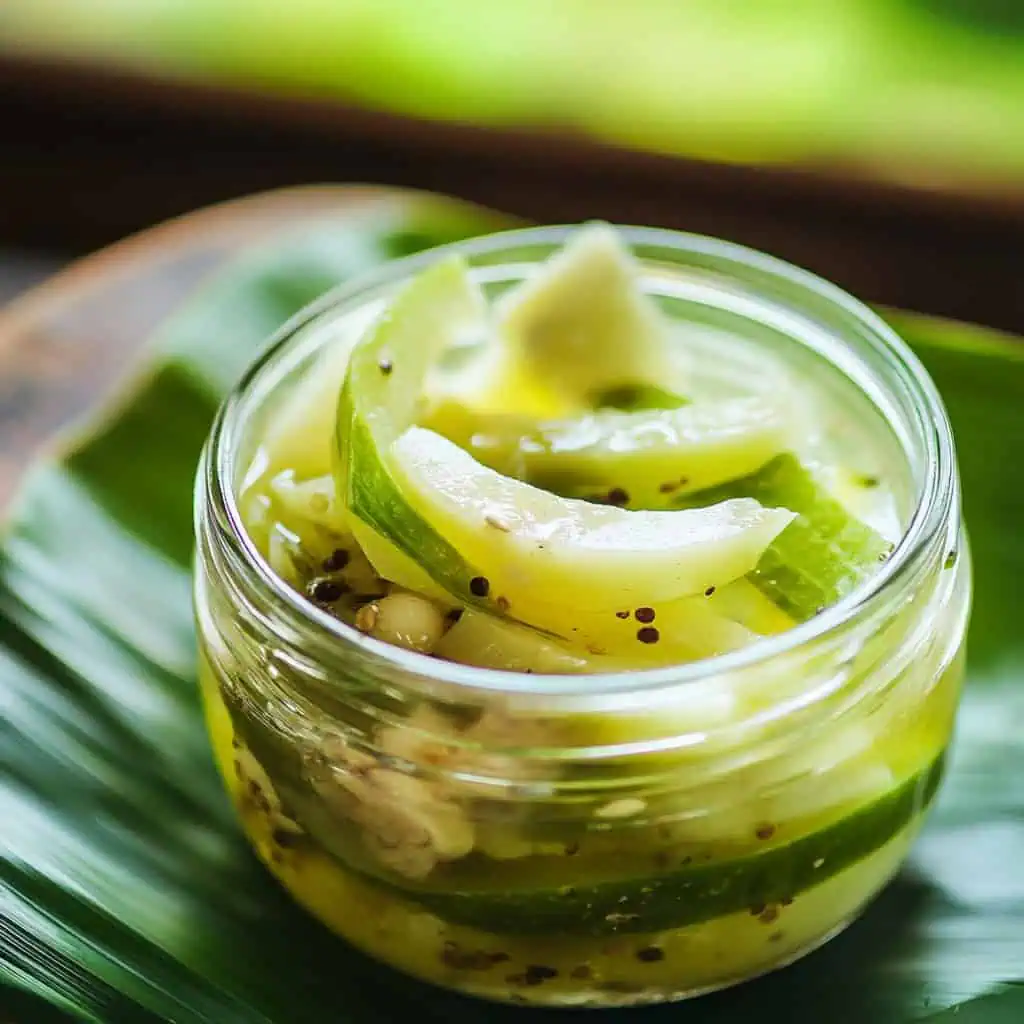
Why You'll Love This Recipe
- Authentically Sour: Unlike commercial versions, this traditional recipe skips the sugar for a pure, tangy flavor
- Health Benefits: Ampalaya (bitter gourd) is known for its diabetes-fighting properties and high vitamin C content
- Budget-Friendly: Requires just one bitter gourd and basic pantry ingredients
- Make-Ahead: Perfect for batch cooking and meal prep
- Versatile: Pairs beautifully with grilled meats, fried fish, and Filipino classics
Ingredients
Every component in this Ampalaya Atchara serves a specific purpose. Ampalaya (bitter gourd) forms the foundation with its distinctive flavor and impressive health benefits. Salt plays a dual role – drawing out excess bitterness during preparation and enhancing flavor in the brine.
The aromatics – garlic and ginger – infuse the pickling liquid with warmth and complexity while peppercorns add subtle spice notes. White vinegar creates the characteristic tangy preservation that balances ampalaya's natural bitterness, while a small amount of water tempers the acidity to perfect levels.
Together, these simple ingredients create a harmonious pickle that transforms a challenging vegetable into a crave-worthy condiment – proving that traditional Filipino pickling wisdom requires just a few carefully selected elements to work its magic.
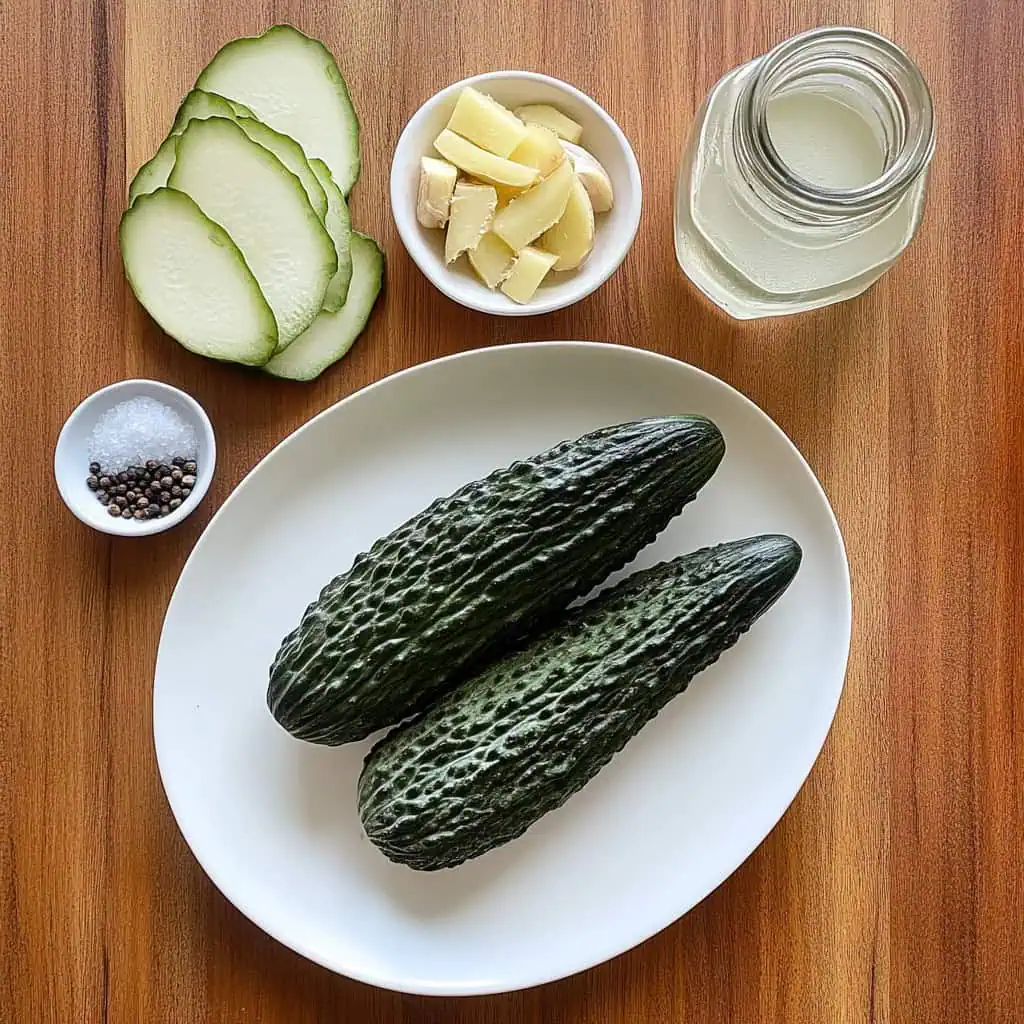
- 1 Ampalaya (Bitter gourd)
- 1 Tablespoon Salt (for preparation)
- 1 Clove Garlic, peeled and smashed
- 1 Half-Inch Ginger, peeled and sliced
- 6 Peppercorns
- ½ Teaspoon Salt (for brine)
- ½ Cup Vinegar
- ¼ Cup Water
Equipment
- 16 oz Glass Jar with Lid: For pickling and storing the atchara safely. Glass is important as it won't react with the vinegar.
- Sharp Knife: For precise, thin cutting of the ampalaya. A sharp knife ensures clean cuts without crushing.
- Cutting Board: Provides a stable surface for safe cutting and preparation.
- Mixing Bowl: Used during the crucial salting process to remove bitterness.
- Clean Tea Towel or Cheesecloth: Essential for squeezing out excess moisture, which helps maintain crispness.
- Measuring Spoons: For accurate measurement of salt and spices.
- Measuring Cup: For precise measurement of vinegar and water.
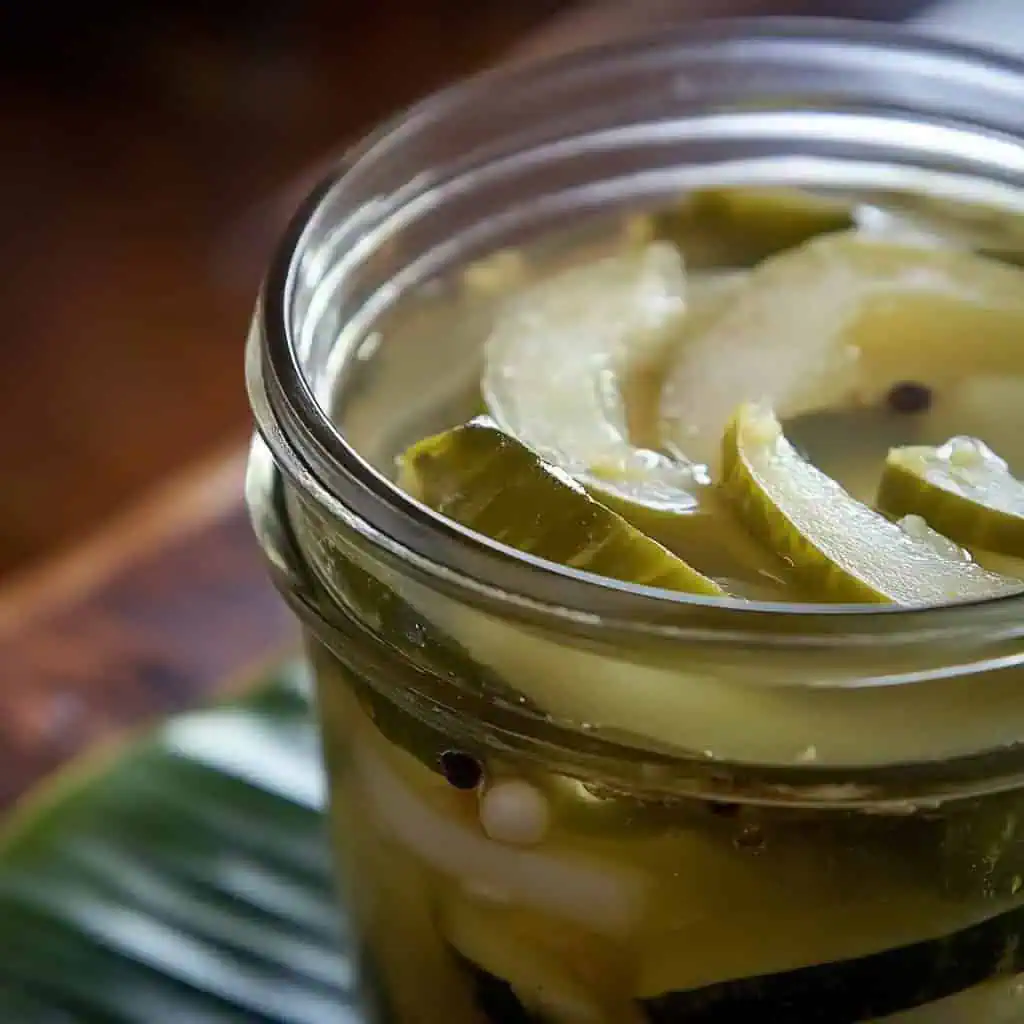
How To Make
- Start by cutting your ampalaya in half lengthwise. Cut each half again lengthwise to make quarters. Take a spoon and gently scrape out all the white flesh and seeds from inside. Now slice the ampalaya into thin crescents, about as thick as two coins stacked together.
- Put all your ampalaya slices in a bowl and sprinkle with one tablespoon of salt. Using your clean hands, gently massage the salt into the slices, making sure every piece gets coated. Let this sit for 10 minutes - this helps draw out the bitter taste.
- After 10 minutes, rinse the ampalaya well under cool running water. Wrap the slices in a clean kitchen towel and squeeze gently to remove as much water as you can.
- Get your clean jar ready. Put in the smashed garlic, sliced ginger, peppercorns, and half teaspoon of salt. Add a quarter cup of water and stir everything around to help the salt dissolve.
- Add your squeezed ampalaya slices to the jar. Pour in the half cup of vinegar. If you find regular pickles too sour, you can use half vinegar and half water instead.
- Close the jar tightly and leave it on your kitchen counter overnight (about 12-24 hours) at room temperature (25-27°C). The next day, move your jar to the refrigerator where it will keep well for up to 2 months.

Tips from Lola's Kitchen
- Choose Quality Ampalaya: Look for firm, dark green bitter gourds with no soft spots. Medium-sized ones typically have the best flavor balance.
- Slice Strategically: The thinner you slice, the better it absorbs the pickling liquid and the less intense the bitterness.
- Vinegar Matters: Use pure white vinegar for the clearest, most vibrant pickle. The quality of your vinegar directly impacts the final flavor.
- Jar Sterilization: Always sterilize your jar by boiling for 10 minutes before use to prevent unwanted bacteria and ensure longer shelf life.
- Salting is Critical: Don't skip or rush the salting step - it's crucial for removing excess bitterness and ensuring proper texture.
- Room Temperature Pickling: The initial countertop pickling period allows fermentation to begin, developing more complex flavors.
- Patience Pays Off: While edible after 24 hours, the flavor continues to improve over the first week.
Traditional Serving Suggestions
- As a side dish for Inihaw na Liempo (Grilled Pork Belly)
- Alongside Pritong Isda (Fried Fish)
- With Lechon Kawali (Crispy Pork Belly)
- As part of a traditional Filipino boodle fight
- As a palate cleanser between rich dishes
Substitutions
- Vinegar: Apple cider vinegar or coconut vinegar can replace white vinegar for different flavor profiles
- Ginger: Turmeric root adds a golden color and anti-inflammatory benefits
- Garlic: Shallots (sibuyas tagalog) provide a milder, sweeter alternative
- Peppercorns: Red chili flakes can substitute for those who prefer heat over pepper's aroma
- Bitter Gourd: While not traditional, zucchini can work for those who find ampalaya too bitter (though you'll miss the health benefits)
Troubleshooting
- Too Bitter: Extend salting time to 15-20 minutes or add ½ teaspoon of honey to the brine
- Too Sour: Dilute with more water or add a pinch of salt to balance the acidity
- Not Crispy: Ensure thorough squeezing of excess moisture before pickling and check that your ampalaya was fresh
- Cloudy Brine: This is normal after a few days of pickling and doesn't affect quality or taste
- Mold on Top: Discard if any mold appears - this indicates contamination during the process
Storage & Reheating
- Store in refrigerator for up to 2 months in the original sealed jar
- No reheating necessary - serve chilled or at room temperature for best flavor
- Always keep ampalaya slices fully submerged in pickling liquid
- Use clean, dry utensils when serving to prevent contamination
- If the color darkens slightly over time, this is normal and doesn't affect quality
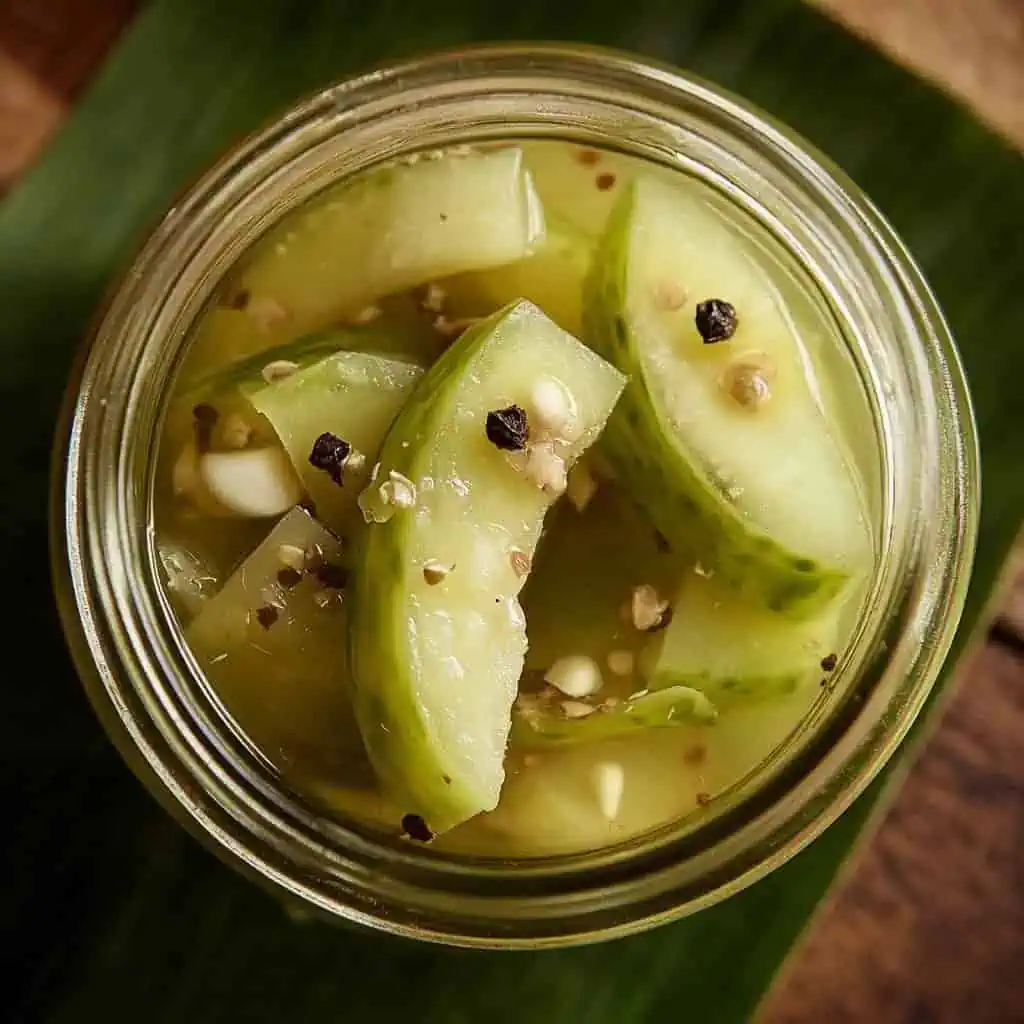
FAQ
Why is salting necessary?
Salting helps remove excess bitterness and moisture, ensuring better pickle quality and crunch.
How long will the atchara last?
Properly stored in the refrigerator, it will last up to 2 months.
Can I use a plastic container?
Glass is recommended as it won't react with the vinegar and maintains better pickle quality.
Should I boil the bitter gourd?
No, raw ampalaya is traditional and maintains better texture and nutritional value.
Is this recipe suitable for canning?
This recipe is designed for refrigerator pickling, not shelf-stable canning. For long-term storage, you would need to modify with proper canning procedures.
Can I add sugar to make it less sour?
Yes, though traditional recipes don't include sugar. Start with 1 teaspoon if you prefer a balance.
Is it normal for the ampalaya to soften slightly?
Yes, though it should still maintain some crunch. Complete softening indicates over-pickling.
How do I know if it's gone bad?
Discard if you notice any mold, off odors, bubbling, or extremely soft texture.
Related
Looking for other recipes like this? Try these:

Ampalaya Atchara Recipe (Filipino Bitter Gourd Pickles)
Equipment
- 16 oz Glass Jar with Lid (Para sa pagpi-pickle / For pickling)
- Sharp Knife (Matalim na kutsilyo / For precise cutting)
- Cutting Board (Tabla / For preparation)
- Mixing Bowl (Mangkok / For salting process)
- Clean Tea Towel or Cheesecloth (Malinis na tela / For squeezing out excess moisture)
- Measuring Spoons (Panukat / For accurate measurements)
- Measuring Cup (Tasa / For liquid measurements)
Ingredients
For Preparation:
- 1 Ampalaya Bitter gourd / Pare
- 1 Tablespoon Salt Asin
For Pickling:
- 1 Clove Garlic peeled and smashed (Bawang, binasag)
- 1 Half-Inch Ginger peeled and sliced (Luya, hiniwa)
- 6 Peppercorns Paminta
- ½ Teaspoon Salt for brine Asin para sa pinagbabaran
- ½ Cup Vinegar Suka
- ¼ Cup Water Tubig
Instructions
- Start by cutting your ampalaya in half lengthwise. Cut each half again lengthwise to make quarters. Take a spoon and gently scrape out all the white flesh and seeds from inside. Now slice the ampalaya into thin crescents, about as thick as two coins stacked together.
- Put all your ampalaya slices in a bowl and sprinkle with one tablespoon of salt. Using your clean hands, gently massage the salt into the slices, making sure every piece gets coated. Let this sit for 10 minutes - this helps draw out the bitter taste.
- After 10 minutes, rinse the ampalaya well under cool running water. Wrap the slices in a clean kitchen towel and squeeze gently to remove as much water as you can.
- Get your clean jar ready. Put in the smashed garlic, sliced ginger, peppercorns, and half teaspoon of salt. Add a quarter cup of water and stir everything around to help the salt dissolve.
- Add your squeezed ampalaya slices to the jar. Pour in the half cup of vinegar. If you find regular pickles too sour, you can use half vinegar and half water instead.
- Close the jar tightly and leave it on your kitchen counter overnight (about 12-24 hours) at room temperature (25-27°C). The next day, move your jar to the refrigerator where it will keep well for up to 2 months.
Tips from Lola's Kitchen
- Choose firm, dark green ampalaya with no soft spots
- The thinner you slice, the better it absorbs the pickling liquid
- Use pure white vinegar for the clearest, most vibrant pickle
- Sterilize your jar by boiling for 10 minutes before use
- Don't skip the salting step - it's crucial for removing excess bitterness
Nutrition
The Story Behind Ampalaya Atchara
Atchara is a beloved Filipino pickle that shows our connection to both native ingredients and foreign influences. While most Filipinos know atchara as the sweet papaya pickle that comes with barbecue, there's a whole world of traditional atchara variations found in different Filipino homes, including this special version made with ampalaya (bitter gourd).
In many Filipino households, especially in the provinces, pickling wasn't just about creating side dishes – it was a practical way to preserve vegetables during abundant harvests. Our ancestors would make atchara from whatever vegetables were in season, and ampalaya, being available year-round in Philippine gardens, became a popular choice. Unlike the sweet atchara we know today, traditional versions like this Ampalaya Atchara were purely sour, using vinegar as both flavoring and preservative.
What makes this recipe special is its simplicity. It follows the old way of making atchara, before sugar became a common ingredient in Filipino kitchens. Many Filipino elders, like my own Lola, prefer this sugar-free version because it pairs perfectly with rich Filipino dishes like lechon, inihaw na isda, and crispy pata. The strong vinegar kick combined with ampalaya's natural bitterness helps cut through oily foods, making it an excellent digestive aid – something our ancestors knew well.
Today, while sweet atchara dominates store shelves, this traditional Ampalaya Atchara continues to be made in Filipino homes, especially in regions where bitter flavors are celebrated as part of the local cuisine. It's a testament to how our local palate has preserved age-old tastes, even as our food culture continues to evolve. Each family has their own version, adjusting the vinegar strength and pickling time to match their taste preferences, making it a truly personal Filipino recipe passed down through generations.
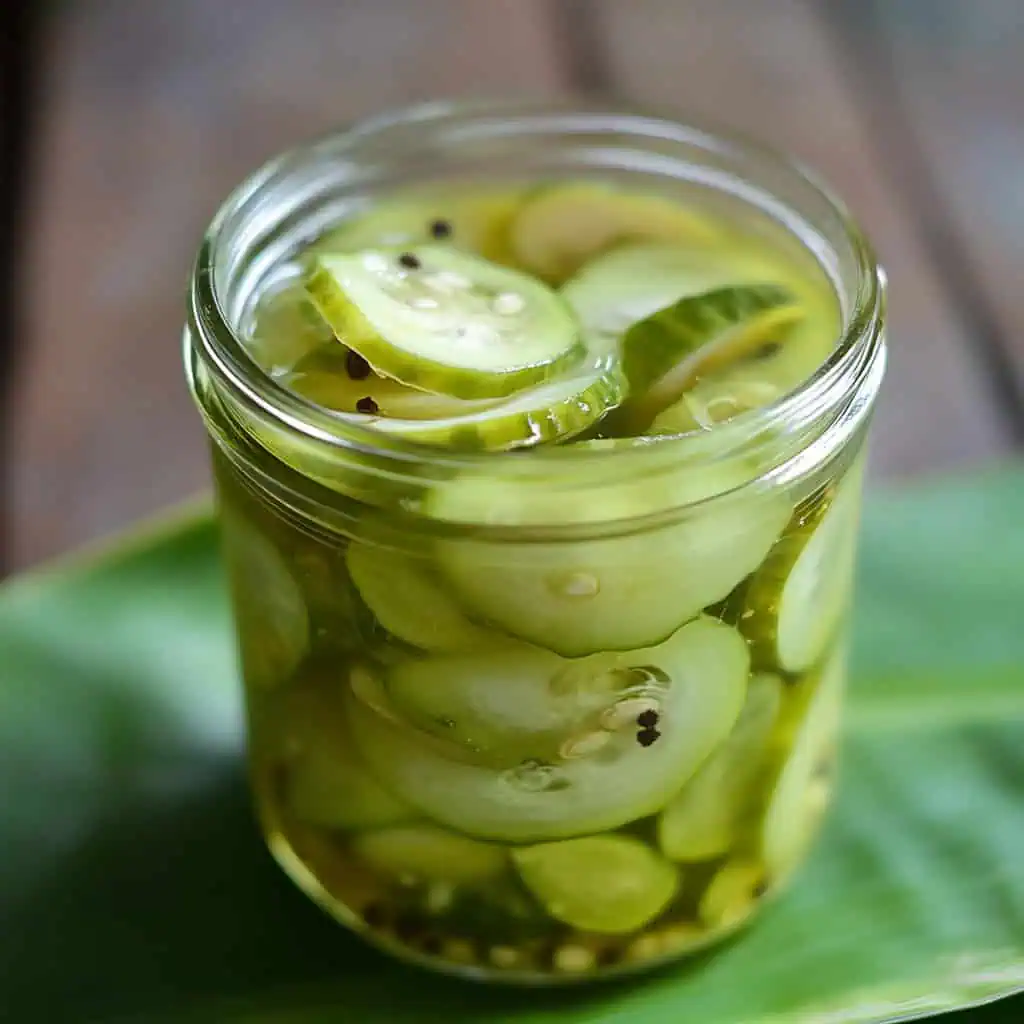





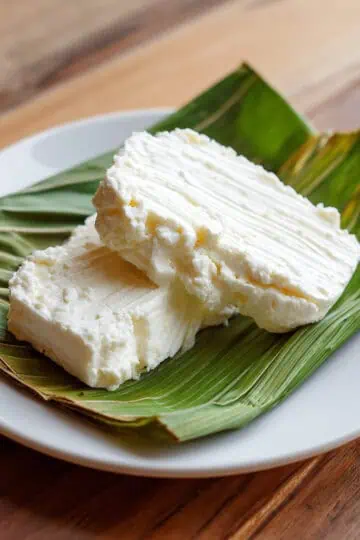
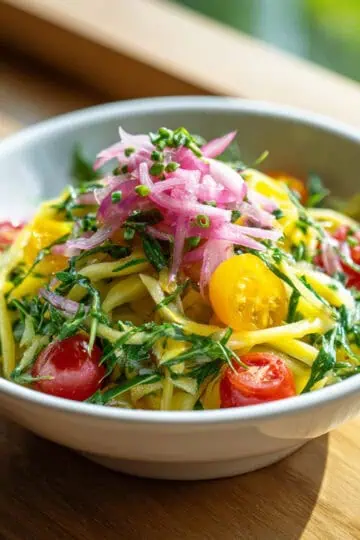
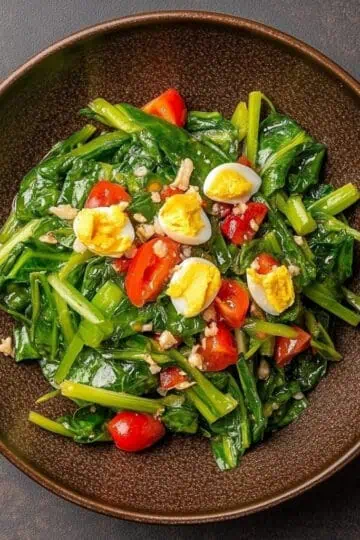
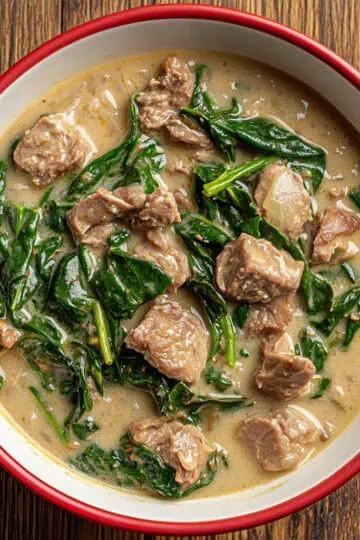
Comments
No Comments